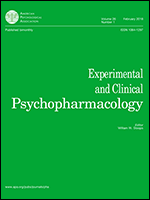
“Δ9-tetrahydrocannabinol (Δ9 -THC), the principal active component in Cannabis sativa extracts such as marijuana, participates in cell signaling by binding to cell surface receptors. CB1 receptors (CB1 s) are present in both inhibitory and excitatory presynaptic terminals. CB2 receptors (CB2 s) found in neuronal subpopulations in addition to microglial cells and astrocytes and are present in both pre- and postsynaptic terminals.
Subsequent to endocannabinoid (eCB) system discoveries, studies have suggested that alcohol alters the eCB system and that the eCB system plays a major role in the motivation to abuse alcohol.
Preclinical studies have provided evidence that chronic alcohol consumption modulates eCBs and CB1 expression in brain addiction circuits. In addition, studies have further established the distinct function of the eCB system in the development of fetal alcohol spectrum disorders. This review provides a recent and comprehensive assessment of the literature related to the function of the eCB system in alcohol abuse disorders.”
https://www.ncbi.nlm.nih.gov/pubmed/31265740
https://bpspubs.onlinelibrary.wiley.com/doi/abs/10.1111/bph.14780







 “Cannabidiol (CBD) is a natural compound of cannabis, which exerts complex and widespread immunomodulatory, antioxidant, anxiolytic, and antiepileptic properties. Many experimental data suggest that CBD could have several types of application in alcohol use disorder (AUD) and alcohol-related damage on the brain and the liver.
“Cannabidiol (CBD) is a natural compound of cannabis, which exerts complex and widespread immunomodulatory, antioxidant, anxiolytic, and antiepileptic properties. Many experimental data suggest that CBD could have several types of application in alcohol use disorder (AUD) and alcohol-related damage on the brain and the liver.